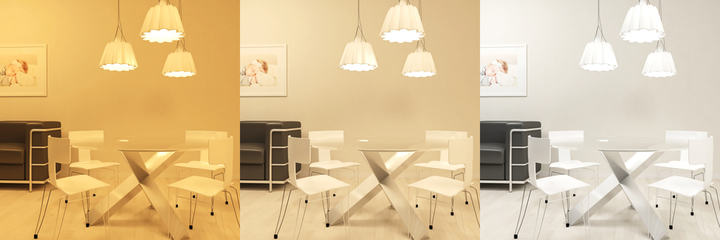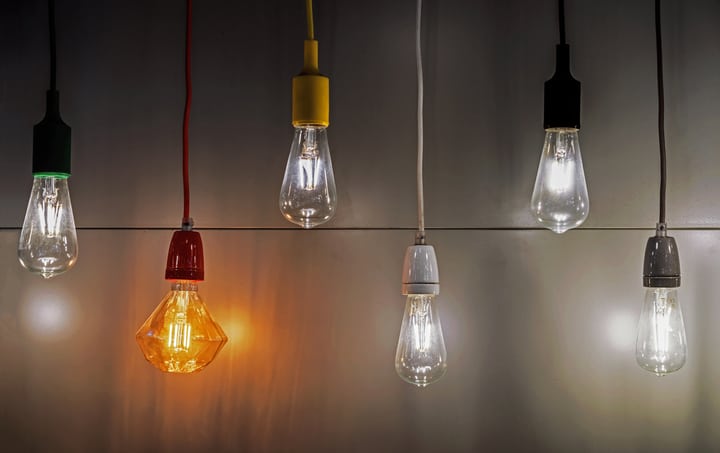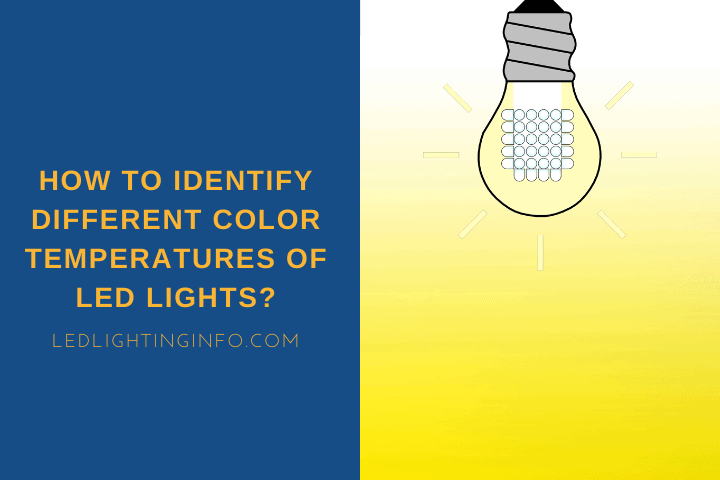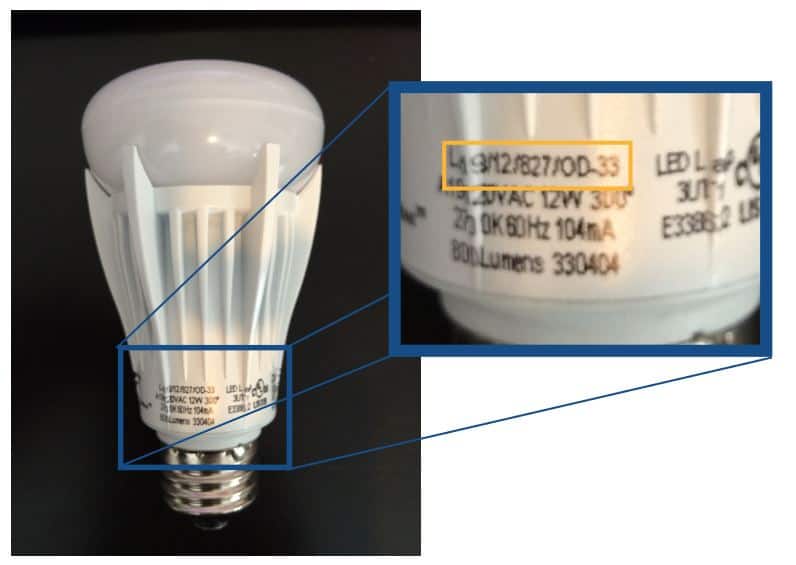Have you ever been frustrated under your existing lights when they don’t appear to look the way you wanted them to?
Most likely, you have picked out the wrong color temperature for your LED bulb.
The color temperature of your light bulbs makes a huge difference, so how do you check it?
You can determine the color temperature of an LED bulb by reading the Correlated Color Temperature (CCT) rating:
- You’ll either see the temperature in Kelvins, likely between 2700K and 6500K.
- It may also be presented as a 3-digit number, likely beginning 7, 8, or 9, incorporating the Color Rendering Index.
- You may find it printed on the bulb; otherwise, check the packaging or the online product description for the bulb model.
In this guide, I’ll explain:
- How to measure the color temperature of your LED bulbs
- Whether there is a correlation between color temperature and brightness (lumens)
How To Measure Color Temperature?

It’s not easy to measure the Kelvin rating of LED lights yourself – you’d need a specialist light meter. It’s much easier to just check whether the Kelvin rating is printed on the bulb, or the packaging it came in.
Light bulbs will always have their color temperature advertised somewhere. If it’s not on the bulb or the packaging, or if you’ve trashed the packaging, just check the model numbers of your light bulbs. Search for that online and you should be able to find the color temperatures.
The lower the Kelvin number, the more ‘yellow-orange’ the shade of white, while higher numbers are more of a blue cool light. Most LED light bulbs range from 2700K warm white to 6500K cool white.
This is called the Correlated Color Temperature rating, which gives a standardized measurement of how cool or warm your lights are.
How To Know If Bulb Is White Or Yellow?
Warm lights that are considered to be more of a yellow light will have a color temperature of around 3000K to 3500K. A pure white light bulb will have a higher Kelvin temperature of around 5000K.
Low CCT lights start from red, orange, then going to yellow, and will be below the 4000K range. The term ‘warmth’ to describe a low CCT light is perhaps a carryover from the feeling of a fire or candle that burns with orange tones.
The same goes for cool white LEDs that are more of a blue light of around 5500K or more – it’s related to the cooler association of blue shades.
For a pure white light appearance, you’ll want color temperatures between 4500K and 5500K, with 5000K being the sweet spot.
Color Rendering Index Scale
There is a second scale that impacts the color of bulbs, called the Color Rendering Index (CRI). This is more a measurement of how accurately LED bulbs (and older incandescent bulbs and fluorescent bulbs) render their advertised color temperatures.
This CRI can be in the “700”, “800”, or “900” series. This simply signifies the percentage of CRI, so an 800 series represents a CRI of 80%, a 900 series represents CRI of 90%, etc. The higher the number, the more accurate the light color is.
So how is this relevant to color temperature?
Firstly, the CRI will affect how accurate the color of visible light is – so a high CRI on a cool white light will mean it’s a sharp light color, as opposed to a dull and washed out light.
Secondly, it might also impact where you find the CCT information. Because sometimes the color temperatures are displayed as part of a single code alongside the CRI.
In that case it would be a 3-digit code, with the first digit representing the CRI (either 7, 8, or 9) and the other digits being an abbreviated color temperature.
So, a 727 bulb would mean a low-quality 70% CRI, and color temperatures of 2700K.
Whereas a 955 bulb would mean a high quality light color, close to natural daylight in shade.
Here is the picture with example of such bulb and where you can find it.
Do Apps To Measure Light Temperature Work?
While there are some good apps for measuring the brightness of a light bulb or the surrounding area, you can’t rely on standalone apps to measure the Kelvin scale. They aren’t accurate enough and are impacted by the quality of the camera sensor on your phone.
Phone apps such as the Lux Light Meter Pro (iOS) can measure how bright the light is within a space, and are well-reviewed. But color temperature is different. Smartphones have sophisticated camera sensors, but they can’t give you an exact rating of the different color temperatures of lights in a room.
However, you can buy dedicated color temperature meters that work with a smartphone app.
Color Temperature vs Lumens: Is There Correlation?

The color temperature and the luminosity of your LED bulbs are completely unrelated. Lumens is a measurement of brightness, and you can have a low-brightness light that is warm white, or one that is cool white.
Both are important measurements of your light source – if you’re trying to set the right mood with a light bulb then you need to choose one that has the right color temperature and the right brightness.
Let’s use the kitchen as an example – you want your LED bulbs to be a cooler white, because this color will keep you more alert. And it’s important that the lighting is bright enough so you can focus on your task while cooking.
If the color temperature of the lighting is wrong, you might have the wrong ambience and the room might make you sleepy.
But if the LED bulbs have low lumen ratings, it could make your kitchen more dangerous – you may not be able to properly see what you’re chopping.
They’re not linked – but both the brightness and color temperature affect the overall light output of your bulbs.
Final Words
Now you know what to look for in the color temperature of your lights, and you can choose the right lighting options for your home.
Most people prefer a warm light in their living rooms or bedrooms, where you want to relax, and a cool light where you need to stay more alert and awake.
Of course, the easier option would be to buy ‘ambiance’ smart light bulbs that let you change the color temperature from your phone.
And if you’ve got problems with the brightness of your LED light, check my guide on how to fix that.
Looking for an LED bulb but not sure what type you need?
Check out my free bulb picker and select the right bulb within few clicks.




Comments are closed.